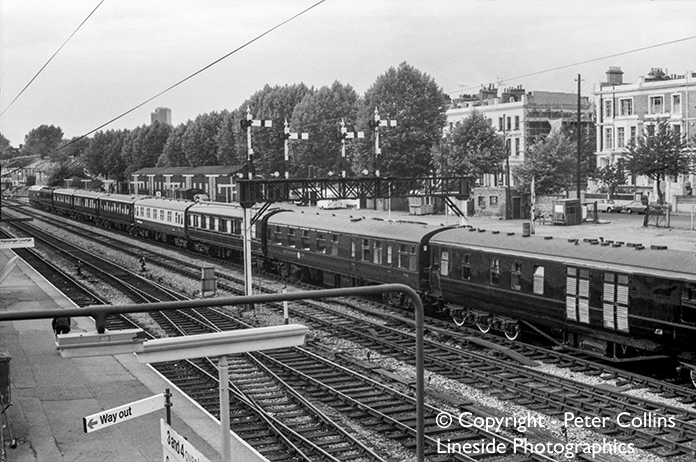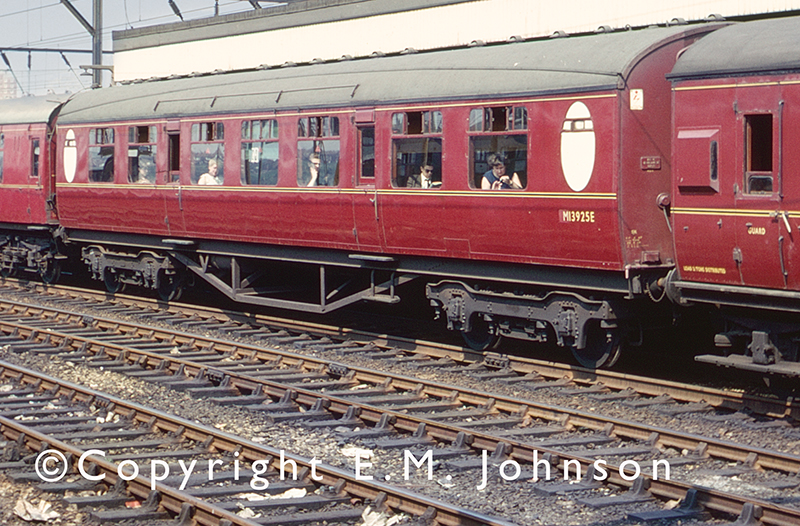
The stock of the Royal Train, with what we believe is 47086 ‘Colossus’ at the front, awaits departure from Kensington Olympia some time between Summer 1974 and Summer 1977.
As a follow up to our last post which featured the Royal Train at Kensington Olympia, I thought I would post this shot of the train showing eight of the carriages. If possible I would like to tray and identify the carriages that can be seen in the photo.
The carriages that can be identified at the moment from other photos, and a bit of research, are as follows (from the loco towards the photographer):
Ex LMS Coach (10071) numbered 5155m and described as a Staff Couchette
Ex ECJS 3908 Queen Alexandra’s saloon (a 12-wheeler)
Unidentified Coach
Unidentified Coach
BR Mk.1 Sleeper 2013 (In Blue/Grey livery)
Unidentified Coach
BR Mk.1 Restaurant Car M325 (this went back into BR service in 1977)
Unidentified Coach (a 12-wheeler)
If anybody can help identify the unidentified coaches I would appreciate it. The 12-wheeler closest to Peter should be easy, but I cannot find any reference to it at the moment. It may be another ECJS coach which was used as a generator van and staff coach, but it’s got me flummoxed!)
When trying to research older photographs like this the internet always seems to be able to help, but in this instance I have struggled to find an online resource for the Royal Train, other than a useful Wikipedia entry! If anybody can point me to an online resource about the Royal Train I would very much appreciate it.
Finally, I am pretty sure that the locomotive is 47086 ‘Colossus’. Depending on the date of the photograph the loco was allocated either to Old Oak Common or Cardiff Canton depot. Given my limited knowledge of Royal Train engine operations, I think this may also help narrow down the date for the photograph to before October 1976 when the allocation to Cardiff was made; as I don’t suppose the loco would be prepared in Cardiff for a movement starting in London.
So I think the photo was taken in the summer of 1974, 1975 or 1976. Does this jog anybody’s memory?
Error: Contact form not found.


